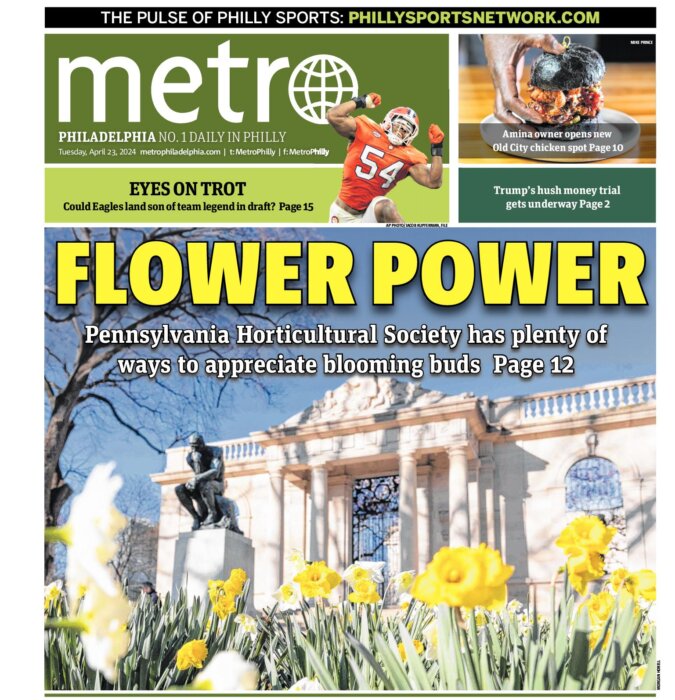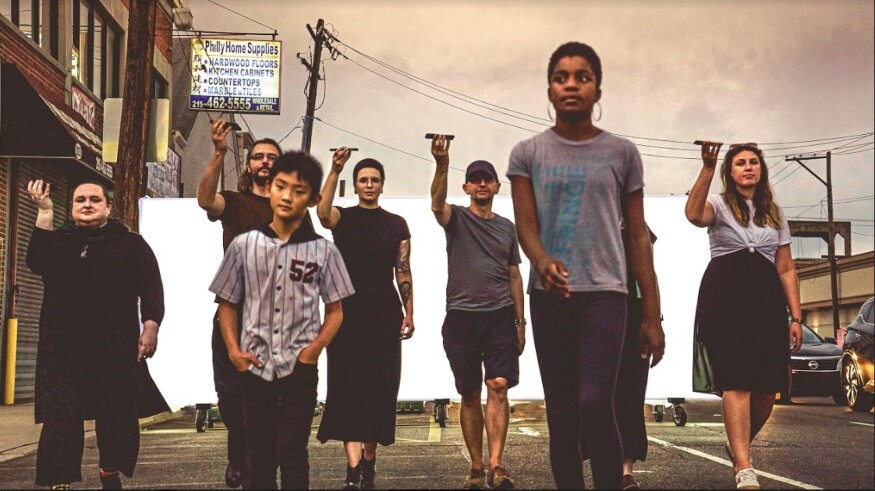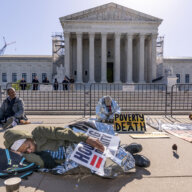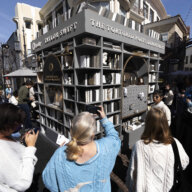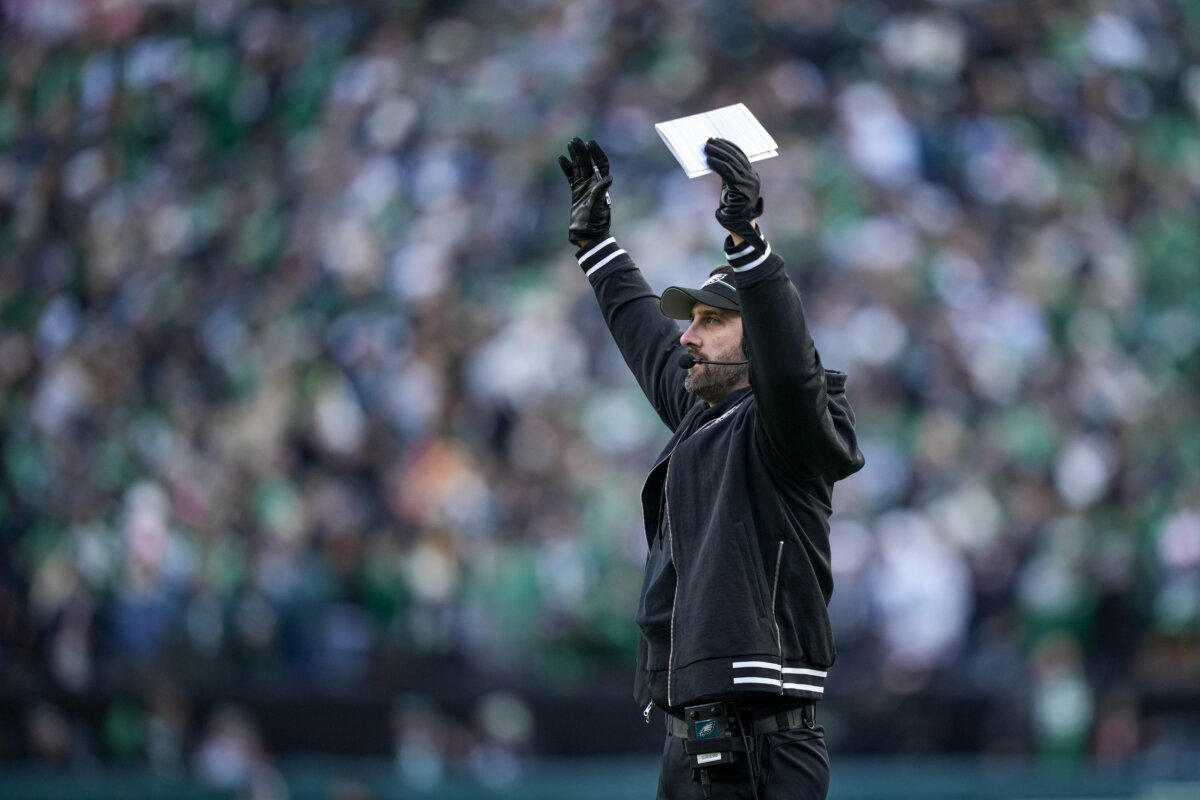Over a century ago, Philadelphia was home to one of the biggest hits in the worst pandemics in history that killed 20,000 people in the City of Brotherly Love and over 50 million people around the world. The influenza pandemic ripped through Philadelphia, marking the worst outbreak in any other city in the US. Many believe the 1918 Fourth Liberty Loan Parade kick-started this fatal event, and although the pandemic was more than destructive to the city, there has never been too much recognition of the catastrophe or of those who passed.
The Mütter Museum is honoring those who died in the 1918 influenza pandemic with a parade of light.
That is all about to change this weekend. In anticipation of the Mütter Museum’s new permanent exhibit opening next month, “Spit Spreads Death,” the Museum and the artists from Blast Theory working on the exhibit organized a parade for this Saturday that will mimic the route of the Fourth Liberty Loan Parade 101 years ago and honor those who passed in the pandemic. The parade will be unlike anything the city has ever seen, and on the anniversary of the outbreak, there is no better way to remember the darkness that overtook the city than with light.
The award-winning U.K.-based art group Blast Theory has been working on the parade and “Spit Spreads Death” exhibit for years, and according to lead artist Matt Adams, this is one of the most in-depth projects they have ever worked on.
“What’s really unusual about this project is that as artists we were brought in right at the beginning of the project — even before the exhibition itself was designed and conceptualized,” says Adams. “It was so we could work with the historical curator and with the visual arts curator to collaborate on thinking about how the artwork that goes alongside the exhibit would be truly integrated. It’s not usual for artists, but we were really deeply involved with the conceptual thinking and work on this project. That’s how the idea for the parade came up.”
Since “Spit Spreads Death” focuses on the 1918 influenza pandemic and the parade was a catalyst, it only makes sense to commemorate the occasion on the 101st anniversary.

“We’ve never made a parade before in our lives or in our careers, it’s a new thing for Blast Theory. But I learned a lot. First of all, I learned about Philly being a town with parades in it’s DNA so that was fascinating. Then to hear about this Fourth Liberty Loan Parade on Sept. 28, 1918, which happened just as the flu had arrived into the city … public health specialists were already recommending to cancel that parade, but the city authorities decided to go ahead with it,” says Adams. “In doing so, [they] accelerated the spread of the disease in Philadelphia. That just seemed like such a pivotal moment. Philadelphia was one of the worst-hit major cities in the U.S. and in my view that is partly attributable to the parade.”
The parade will kick off this Saturday at dusk. Any Philadelphian who wishes to attend can sign up to march in honor of one of Oct. 12, 1918’s 751 flu victims. Plus, to truly “walk in that person’s shoes,” they’ll receive that person’s death certificate. Blast Theory will also create a 15-25-minute art film of the parade that will be a centerpiece of the “Spit Spreads Death” exhibition.
“We’ve built a series of floats that are unlike any float you have ever seen before; they are essentially illuminated sculptures,” says Adams.
The floats are not the only unique aspect to the parade.
“We have a score composed by David Lang who is an Oscar-nominated and Pulitzer Prize-winning composer, but what’s interesting is that David had a family member die in the flu pandemic of 1918. So he has a very personal connection with this project,” adds Adams. “He composed a score that contains all of the names of the people who died on the worst day of the flu pandemic in 1918 with The Crossing Choir based here in Philadelphia. His score will be played back through the cellphones of everyone involved in the parade. At Blast Theory, we’ve developed a software that can reach hundreds of phones and essentially we will play the world premiere of this piece of music through the participant’s phones.”

One of the most incredible aspects of this already unique event is the choreographed memorial moments for each victim.
“There’s a kind of form of choreography to the commemoration. If you’ve chosen to honor someone’s memory from 1918, there’s a moment where you stand completely still as the parade marches up Broad Street, and the whole parade flows around you. That includes the two illuminated floats,” says Adams. “Essentially you pass into a corridor of light for a minute as you hold up the name of the person who you are honoring. That basically carries on all the way north up Broad Street.”
Although the parade is meant to honor those who fell victim to the pandemic in 1918, it’s also a way to celebrate the men and women in the public health field today.
“The tone of the parade is going to be respectful, but it’s a celebration, too. It’s not just about looking backward, it’s really about looking at where we are at today and looking forward,” says Adams. We’re specifically asking nurses and doctors and anyone else who works in public health to come join the parade and walk with us in their uniforms to demonstrate the importance of public health. The people who work in that industry are little celebrated and often over-looked. When they manage to avoid an epidemic, no one really notices. Yet there is an army of people around the world who all keep infectious diseases at bay. So for us, that’s a really important aspect of it. [The parade] really will be something that people haven’t seen before. I really hope that people will enjoy the opportunity to come out to Broad Street to walk with us this Saturday.”
To learn more about the parade beginning at Marconi Plaza at 5 p.m. on Sept. 28, or to sign up, visit spitspreadsdeath.com
